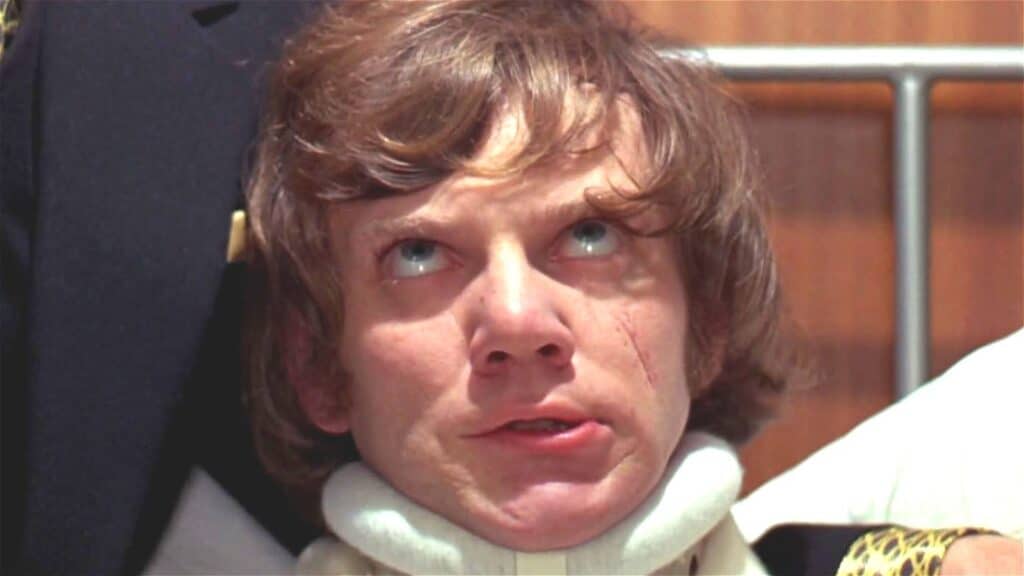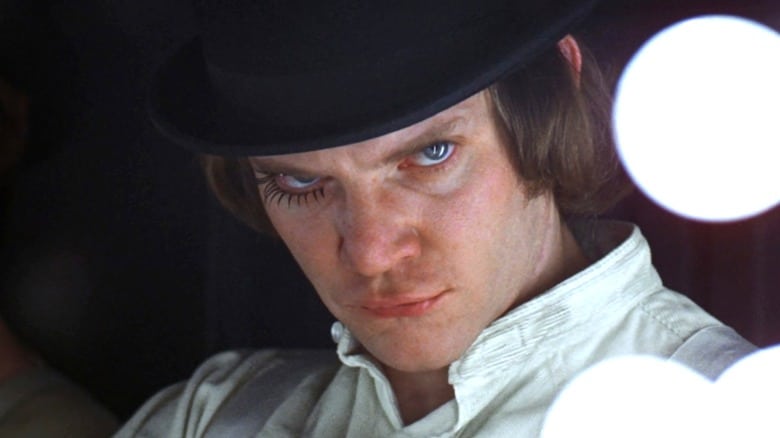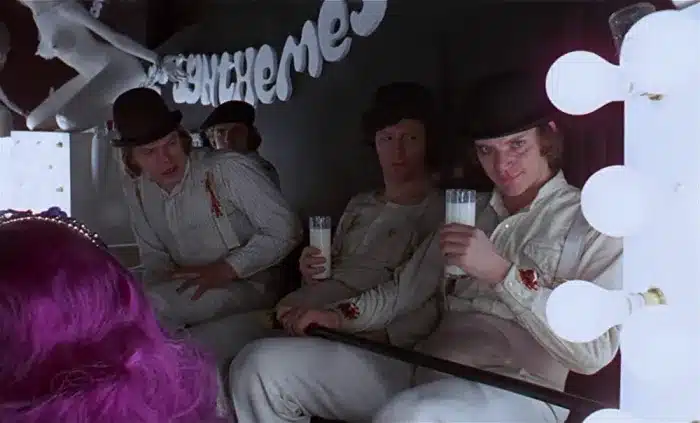
A Clockwork Orange, a criminal sci-fi film by Stanley Kubrick, is unlike many other films in that it has received unanimous acclaim and creative worth. It’s one of the most well-known dystopian works, and some people today even classify it as speculative fiction. It’s based on the 1962 novel of the same name. Here’s our view on what it was all about; the plot and resolution of A Clockwork Orange are explained; spoilers ahead given that the film’s ideas and motifs are just as important now as they were in the 1960s and 1970s.
A Clockwork Orange| A Plot Summary
The narrative centres on Alex DeLarge, a young offender living in a hypothetical dystopian Britain. Alex is the leader of a group of five criminals, including himself, who frequently engage in different violent actions while high on drug-induced milk. It is quite evident from the outset that Alex DeLarge, like Patrick Bateman in American Psycho, is not just a monster but also a byproduct of his civilization.
They break into a remote home one night, assaulting the resident writer, Frank, and savagely raping his wife. A few nights later, Alex is abandoned by his companions during one of their burglaries and is found guilty of 14 years in prison.
He is chosen to serve as a test subject for the so-called Ludovico technique after serving two years of his sentence. In this experiment, the patients are trained by receiving injections of medicines designed to make them queasy while viewing scenes of horrifying violence. The technique’s creators envision a day when they will be able to modify people’s nervous reactions to such activities. This shortens the sentence and clears up prison space. The experiment successfully serves the narrative needs of the film.
Alex goes through a number of trials after being freed from prison. These include being imprisoned and tortured by the author, as well as being tormented by police officers (his two former gang members, Dim and Georgie) (Frank, one of his former victims). When Frank locks him in and makes him listen to Beethoven, he makes an attempt at suicide. The Ludovico method has made Alex hate the music now.

A Clockwork Orange| Ending Explained: Was Alex Cured?
The conclusion of A Clockwork Orange indicates that his condition—which was caused by the Ludovico technique—is undone as a result of surviving the suicide attempt. The government provides Alex with a fantastic career, hush money, and even a public position in an effort to conceal the illegal procedure and human testing. Alex’s claim that he is healed implies that he has turned back into the wicked person he once was.
What distinguishes A Clockwork Orange the book from the film?
Anthony Burgess wrote a book in 1962 that was the basis for the movie.
Nearly as interesting as the novel’s actual plot is the tale of how the book came to be. Burgess received the incorrect diagnosis of a cerebral tumour, which caused him to be more concerned about his family’s future than his own.
He probably would have researched candlestick patterns if he had been looking for a spectacular investment opportunity. Unfortunately, Burgess was a writer, thus he had just one option for making money before he passed away. Knowing he had only a few months left, he intended to create a book that his widow could sell. The entire work was completed in less than three weeks for this reason alone.
The latter chapters of the book are where the movie and book diverge most noticeably. In literature, the plot typically finishes with a happier note. The Ludovico Technique really does reform people, and the story has a mildly satisfying conclusion. Naturally, the book’s final chapter was left out in the US since the publisher believed that the American readership simply wouldn’t find it credible enough. Naturally, the director also held that opinion.
What happened to Pete in A Clockwork Orange?
The fate of Pete is yet another variance between the novel and the film. Pete gets reformed instead of joining the police, unlike Georgie and Dim. He finds a fantastic career and marries Georgina.
One gang member’s positive influence on his life serves as a reminder to Alex that no one is truly beyond redemption. His appearance (which occurs after Alex is sent to prison) is left out of the film.
Unusual Storytelling and World-Building Decisions
A Foreign World
One of the first things that comes to me is how fantastically Kubrick created his worlds. We note that the world seems exceedingly foreign from the very first scene. The characters all wear unique clothing. Their language is very different from regular English, at least in the slang. Even the idea of a pub where troubled youngsters drink milk laced with narcotics instead of booze strikes one as dystopian and deeply unsettling.
Language
The language causes a gulf between our world and the one shown in the film. Burgess did not have to create a totally new language like Tolkien did. Instead, he slangified Slavic words. Given that only young offenders utilised this language, it is obvious that there is a generational divide and a distinct subculture in this imaginary society.
Music
The usage of music in this fictitious world is distinctive and provides a purposeful contrast. Some of the most unsettling, violent, and morally problematic scenes feature classical music, which is frequently associated with high society. This serves as a crucial reminder that some of history’s worst villains—Nazi party leaders, Imperial Japan’s high command, etc.—were not just members of society’s underclass but rather its elite.
A prime example of this is when the Ludovico effect uses Beethoven’s Ninth. Everything is calm, refined, and professional. Many people overlook the fact that these circumstances are comparable to some of the most brutal experiments in history.
Principal Ideas and Motifs

Mental health and Will
Psychiatry and our attempt to use this medical discipline for social engineering aims is one of the movie’s initial themes. The experiment in A Clockwork Orange fails because it turns out to be simple to undo.
This also significantly influences how we define goodness. True goodness, according to both religious and philosophical ideas, must result from one’s own free will. Violence temptation must be resisted out of conviction, not psychological conditioning, for it to be effective.
Violence
A societal critique on the entire film is another idea worth talking about. There are striking similarities between the brutality of street gangs and lab workers. Moreover, the cops later hire two of Alex’s gang members. This supports two important theories. You see, a field that naturally leans towards violence requires workers who share that tendency. The primary distinction here is whether they will be employed by the government (police) or the commercial sector (as gang members).
The Youth Ignored
Most of the time, both parents and the government ignore juvenile delinquency—at least until it becomes a serious problem. Instead of actively monitoring Alex’s activities, Alex’s mother spends her days watching TV.
His probation officer is too preoccupied harassing and molesting him to truly work on his rehabilitation. The only people who are genuinely concerned about his rehabilitation are the researchers who discovered the Ludovico effect, and even they are motivated by twisted interests. A civilization with no future is one that does not care about its youth.
What is the significance of the movie A Clockwork Orange?
What does it all mean, then? Since Alex was initially portrayed as being pure evil, his triumphant comeback is actually not all that unexpected. There is always a method for evil. It is impossible to eliminate it through scientific experimentation. A society must closely monitor what its youth are doing if it intends to combat this tendency.
What did you think of A Clockwork Orange’s storyline and climax? Over the top? Too clever? Please provide your feedback below.
ALSO READ THIS: Brightburn 2019 Explained
